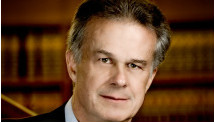TOKYO (Reuters) - Asian shares rallied on Tuesday as recent selling drew bargain hunters ahead of more U.S. economic data and a Federal Reserve policy decision later in the week that may offer clues to the Fed's stimulus plans.
European markets were seen following Asia higher, with financial spread-betters predicting London's FTSE 100 <.ftse>, Paris's CAC-40 <.fchi> and Frankfurt's DAX <.gdaxi> would open up as much as 0.3 percent.
U.S. stock futures were up 0.1 percent, hinting at a firm Wall Street start. <.l><.eu><.n/>
Solid U.S. earnings and an improving U.S. business spending gauge have combined with a recent run of positive global economic data, along with signs of easing financial stress in the euro zone, putting upwards pressure on Treasury yields.
Further signs of brightening U.S. growth prospects would fuel speculation the Fed may consider pulling back on aggressive easing stimulus. The Fed ends a two-day policy meeting on Wednesday.
The first estimate of U.S. fourth-quarter gross domestic product also will be released on Wednesday, followed by non-farm payrolls on Friday.
Few expect any immediate change to the Fed's very accommodative monetary stance while other central banks such as the Bank of Japan also embark on fresh easing to help spur economic activities. India's central bank cut interest rates on Tuesday for the first time in nine months.
The MSCI's broadest index of Asia-Pacific shares outside Japan <.miapj0000pus> rallied 0.9 percent to snap a four-day losing streak, led by a 1.1 percent jump in Australian shares <.axjo> to a fresh 21-month high on gains in financial shares.
"It seems that a lower interest rate environment is starting to improve confidence among the Australian business community. Mix this in with the China rebound and we have a sharp rise in confidence," said Ben Taylor, sales trader at CMC Markets.
South Korean shares <.ks11>, which slumped to an 8-week low on Monday, rebounded 0.8 percent.
Japan's Nikkei stock average <.n225> reversed earlier declines and closed up 0.4 percent, buoyed by optimism over earnings of major banks. <.t/>
"With yields on U.S. Treasury and German government bonds inching higher, one might say investors may be shifting funds to riskier assets from safe-havens," said Yuji Saito, director of foreign exchange at Credit Agricole in Tokyo.
The benchmark U.S. 10-year note yield briefly pierced 2 percent on Monday for the first time since last April, and inched up 2.5 basis points (bps) in Asia from New York close. The 10-year Japanese government bond yield also rose.
Naka Matsuzawa, fixed income strategist at Nomura Securities, said in research note that a sell-off in 5-year Treasury notes over the last two days "would not have occurred unless expectations of an economic recovery have gained ground to the extent that the monetary policy outlook begins to change."
"The market is aware that risks are toward more hawkish FOMC statements in the future rather than dovish ones," considering a pick-up in the U.S. economic recovery and stock market rally, as well as the underlying global risk-on trend, he said.
STUBBORN YEN
Yen selling paused, helping to bolster the benchmark South Korean stock index which is vulnerable to exchange rate swings as exporters lead market capitalization.
The dollar fell 0.1 percent to 90.78 yen after touching 91.32 on Monday, its highest level since June 2010, while the euro recouped earlier losses against the yen to steady around 122.10 yen after hitting 122.91 on Monday, its highest point since April.
The euro was at $1.3450, not far from an 11-month high of $1.3480 hit on Friday.
The euro's strength sharply contrasted with the crumbling pound, which has been pressured by worries about the weak UK economy, prospects of more monetary easing by the Bank of England and the UK's unclear role within the European Union.
The euro extended its recent stellar run to hit 0.8575 sterling, its highest since late 2011, on Tuesday. The pound fell to $1.5687, near a five-month low.
"The UK is a small open economy that has benefited from capital inflows because it is not in the euro area but is in the EU. The former is less helpful now, the uncertainty about the latter is a clear negative. The result could be to take EUR/GBP close to 0.90 before long-term downtrend resumes," said Kit Juckes, FX strategist at Societe Generale in a note.
Commodities were underpinned by a more positive global growth outlook.
"I don't think there's much downside risk," said Tetsu Emori, a commodities fund manager at Astmax Investments in Tokyo. "I think economic data out of the United States has improved, so I don't think there are any negative factors in the market."
U.S. crude rose 0.4 percent to $96.80 a barrel and Brent inched up 0.1 percent to $113.64.
London copper gained 0.4 percent to $8,078 a tonne.
Gold inched up 0.4 percent to $1,661.95 an ounce but was capped by receding investor appetite for safe-haven assets.
Asian credit markets lagged the region's rallying equities, pushing the spread on the iTraxx Asia ex-Japan investment-grade index wider by 2 basis points.
(Additional reporting by Jessica Jaganathan in Singapore and Thuy Ong in Sydney; Editing by Eric Meijer & Kim Coghill)

